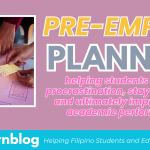Mobile journalism, or MoJo, has revolutionized the way news is produced, enabling journalists to capture, edit, and broadcast stories directly from their mobile devices.
However, effective mobile journalism reporting requires careful planning and attention to detail.
Here are some essential tips that can elevate your MoJo reporting.
Table of Contents
Choose the Right Device
A good device is critical for producing high-quality MoJo content. While any smartphone can work, using a high-performance device can significantly improve your workflow.
A better camera, faster processing speed, and more storage will allow you to shoot clearer footage, edit more efficiently, and export your videos faster when you’re done.
Investing in the right device ensures that your work doesn’t suffer from slow processing times or low-quality footage, making your reporting more professional and polished.

Master the Art of Editing
Editing can make or break your MoJo output. In mobile journalism, the editing phase is where your raw footage is transformed into a polished, coherent story.
It’s crucial to invest time in learning how to edit effectively. Avoid overloading your video with too many graphics or effects.
A cluttered or flashy edit can make your piece feel more like a personal vlog than a professional news report.
Simplicity is key—ensure that your editing enhances the story, rather than distracting from it. Clean, stable edits are essential for creating a professional and engaging report.
Choose a Relevant Background
Your background matters just as much as your content. A relevant background sets the context for your story and gives viewers immediate insight into what the report is about.
Think of it like the setting of a news broadcast: the right environment can speak volumes about the topic.
For example, if you’re covering a local event, shoot in the environment where the event is happening. If you’re reporting on a political issue, a government building or political landmark can reinforce your message.
Always match the background to your topic, as it gives your audience an instant visual cue, making your report feel more grounded and informative.
Use Your Time Wisely
Time management is often a challenge in MoJo because of the tight deadlines and limited resources.
One of the biggest mistakes you can make is rushing through the filming process. While shooting may seem quick, editing takes time—often much longer than the actual filming. Plan ahead and allocate enough time for both filming and editing.
Stay focused during the shooting phase to avoid mistakes, and ensure you capture everything you need.
Rushing through the editing stage can lead to errors, so don’t cut corners when it comes to refining your content. Efficient time management is crucial for delivering high-quality work.
Stay Organized
Organization is key to creating a cohesive MoJo report. Keep track of your materials, shots, and script to avoid confusion during filming.
A disorganized approach can lead to missing shots, wasted time, and fragmented information, which makes your final product look unprofessional.
Outline your script and shot list beforehand and stick to the plan. An organized workflow not only ensures a smoother production process, but it also helps you stay on top of your deadlines and ensures that no important details are missed.

Conclusion
All in all, MoJo is one of the newest category in Campus Journalism when it comes to Schools Press Conferences but it was like a simple reporting from two people that will test their skills that they can use for their dream to be a Journalist.












